Leg Muscles: the Technical Bits.
The long muscles that run up the front of your thigh from your kneecap, threading through your pelvis to attach to your lumbar spine, are know as the hip flexors.

Lifting your knee toward your body takes the work of many muscles, which are collectively known as your hip flexors. The hip flexor muscles include: the iliacus and psoas major muscles, also known as your iliopsoas. the rectus femoris, which is part of your quadriceps.


If you've ever walked a longer distance than usual and noticed that your lower back aches, this will be due to tight hip flexors. Remedy, do lajin for 2 minutes on your left and right leg each.
The large muscles that run from the top of your thigh to your knees are your quadriceps (or 'quads'). ⇩
If you are a sports player, your quads will be strong as these are the main muscle that drive forward.
The muscles in your bottom are your gluteal muscles (or 'glutes') and those down the back of your legs are your hamstrings.

Quadriceps femoris muscle, large fleshy muscle group covering the front and sides of the thigh. It has four parts: rectus femoris, vastus lateralis, vastus medialis, and vastus intermedius.
Hamstrings and glutes.⇩

If you are not using your glutes and hamstrings as much as you could then, apart from any structural problem you are causing, you're missing a trick! You are bypassing some serious toning, posture-enhancing and calorie-burning opportunities.

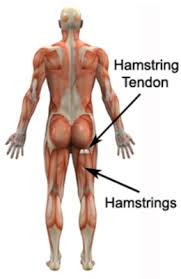

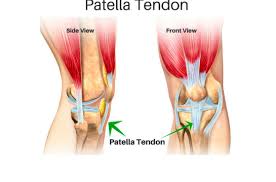
Neck and Upper Back : the Technical Bits
The bone and muscles of your upper back between your shoulder blades are known as the thoraic spine. Many people are tight and immobile here because they are walking wrong - and their posture is bad. This immobility causes the neck muscles ( the sternacleidomastoid muscles) to grow tight and short, making the problem worse. The human body is designed to work as a unit - so when your upper body becomes stiff, there is a direct knock-on effect on the rest of your body. If your shoulders become stiff and their range of movement is restricted, this will restrict the movement in your lower back and hips.


⇩Torticollis means twisted neck, also referred to as wry neck, is a medical term for a stiff neck. Acute torticollis begins suddenly, usually you wake up with it and the cause is often unknown. Drink a glass of warm water. Do Paida around neck region for 5 minutes and Lajin for 2 minutes until pain is gone.

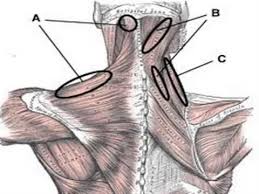
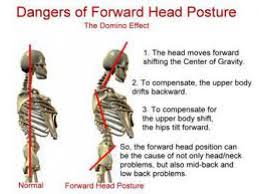

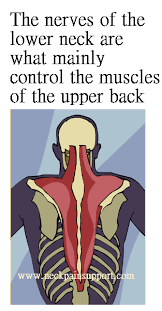
Walk Right - Walkactive
4. Your arms and shoulders
Problem: poor shoulder alignment and reduced natural arm swing. If your shoulders and mid-back are not as mobile as they should be, then your arms will not swing naturally to and fro as you walk. Again, this has a surprising impact on your whole spine. The spine should rotate gently as you walk ( see picture below), but if your arms are not swinging correctly then your spine is not rotating, and you are not fully using the muscles along the sides of your body either ( your oblique muscles, see diagram below) So whether you are a man or woman, your stiff arms and shoulders are unwittingly standing between you and the svelite shape you want to be!
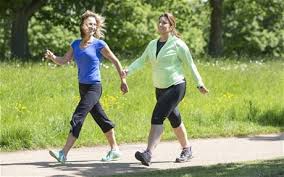
spine should rotate gently as you walk

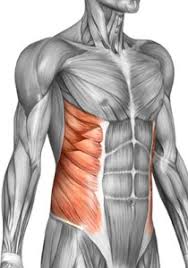
Oblique muscles ↑
The long muscles that run up the front of your thigh from your kneecap, threading through your pelvis to attach to your lumbar spine, are know as the hip flexors.
Lifting your knee toward your body takes the work of many muscles, which are collectively known as your hip flexors. The hip flexor muscles include: the iliacus and psoas major muscles, also known as your iliopsoas. the rectus femoris, which is part of your quadriceps.
If you've ever walked a longer distance than usual and noticed that your lower back aches, this will be due to tight hip flexors. Remedy, do lajin for 2 minutes on your left and right leg each.
The large muscles that run from the top of your thigh to your knees are your quadriceps (or 'quads'). ⇩
If you are a sports player, your quads will be strong as these are the main muscle that drive forward.
The muscles in your bottom are your gluteal muscles (or 'glutes') and those down the back of your legs are your hamstrings.
Quadriceps femoris muscle, large fleshy muscle group covering the front and sides of the thigh. It has four parts: rectus femoris, vastus lateralis, vastus medialis, and vastus intermedius.
Hamstrings and glutes.⇩
If you are not using your glutes and hamstrings as much as you could then, apart from any structural problem you are causing, you're missing a trick! You are bypassing some serious toning, posture-enhancing and calorie-burning opportunities.
Neck and Upper Back : the Technical Bits
The bone and muscles of your upper back between your shoulder blades are known as the thoraic spine. Many people are tight and immobile here because they are walking wrong - and their posture is bad. This immobility causes the neck muscles ( the sternacleidomastoid muscles) to grow tight and short, making the problem worse. The human body is designed to work as a unit - so when your upper body becomes stiff, there is a direct knock-on effect on the rest of your body. If your shoulders become stiff and their range of movement is restricted, this will restrict the movement in your lower back and hips.


⇩Torticollis means twisted neck, also referred to as wry neck, is a medical term for a stiff neck. Acute torticollis begins suddenly, usually you wake up with it and the cause is often unknown. Drink a glass of warm water. Do Paida around neck region for 5 minutes and Lajin for 2 minutes until pain is gone.
Walk Right - Walkactive
4. Your arms and shoulders
Problem: poor shoulder alignment and reduced natural arm swing. If your shoulders and mid-back are not as mobile as they should be, then your arms will not swing naturally to and fro as you walk. Again, this has a surprising impact on your whole spine. The spine should rotate gently as you walk ( see picture below), but if your arms are not swinging correctly then your spine is not rotating, and you are not fully using the muscles along the sides of your body either ( your oblique muscles, see diagram below) So whether you are a man or woman, your stiff arms and shoulders are unwittingly standing between you and the svelite shape you want to be!
spine should rotate gently as you walk
Oblique muscles ↑

No comments:
Post a Comment